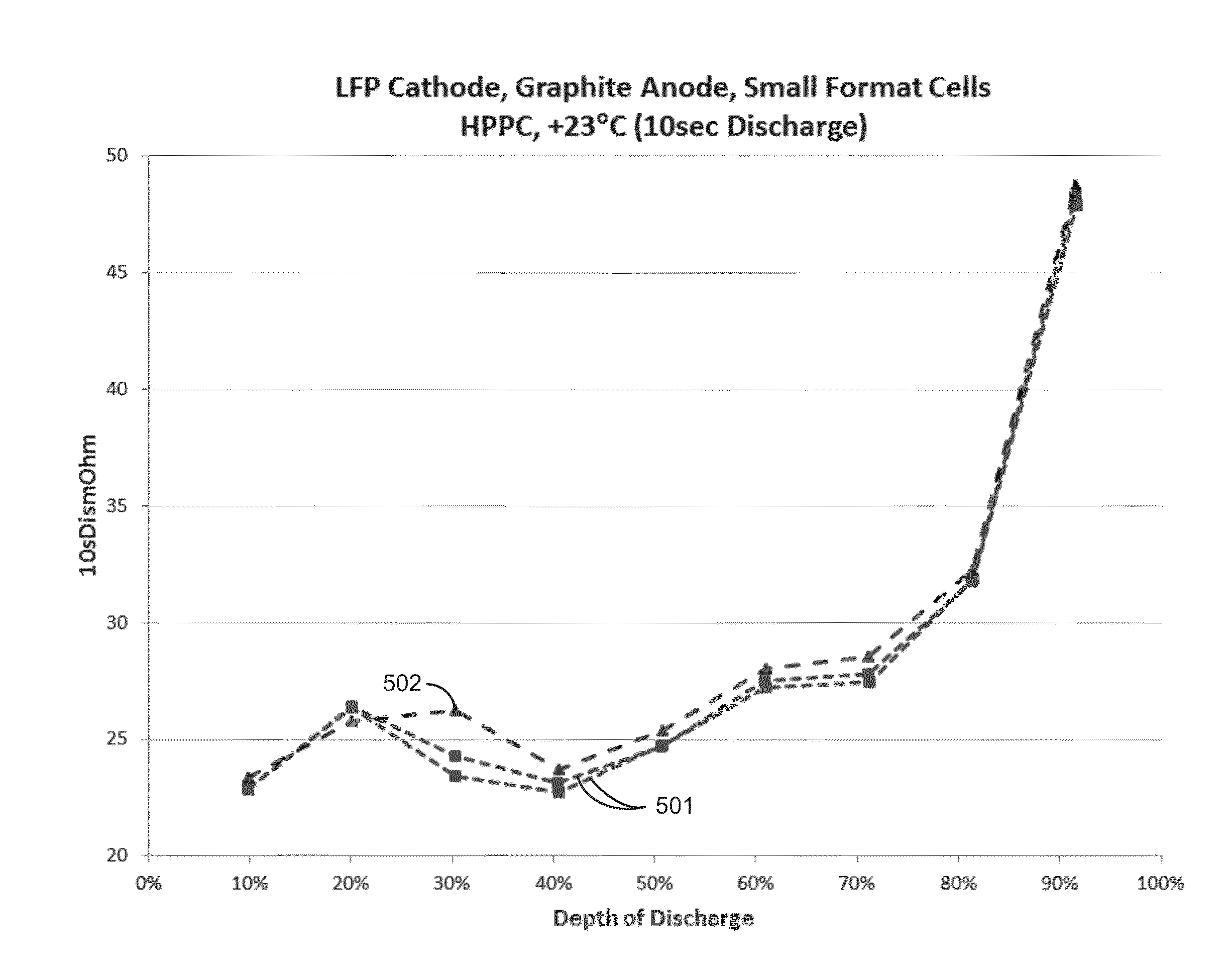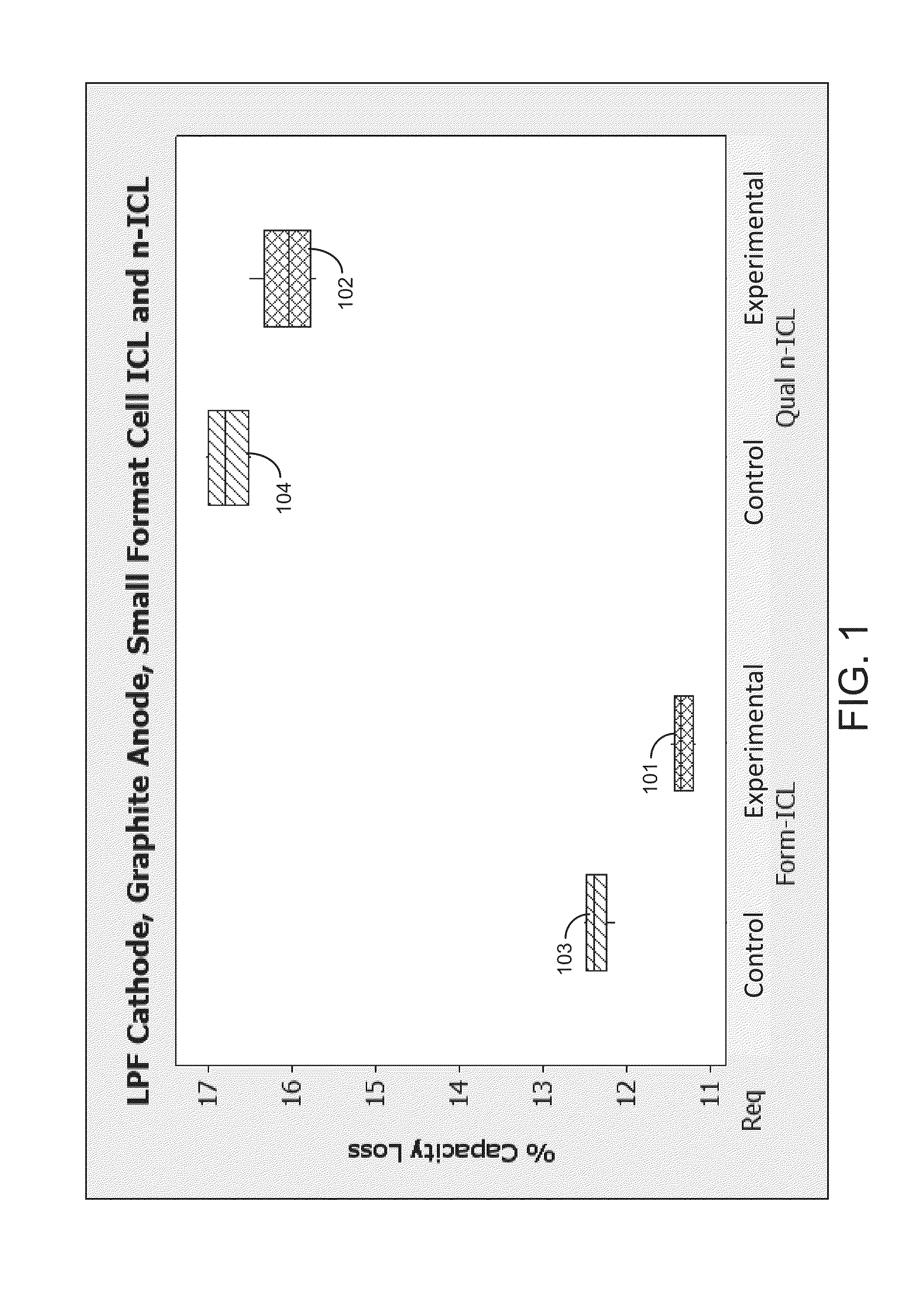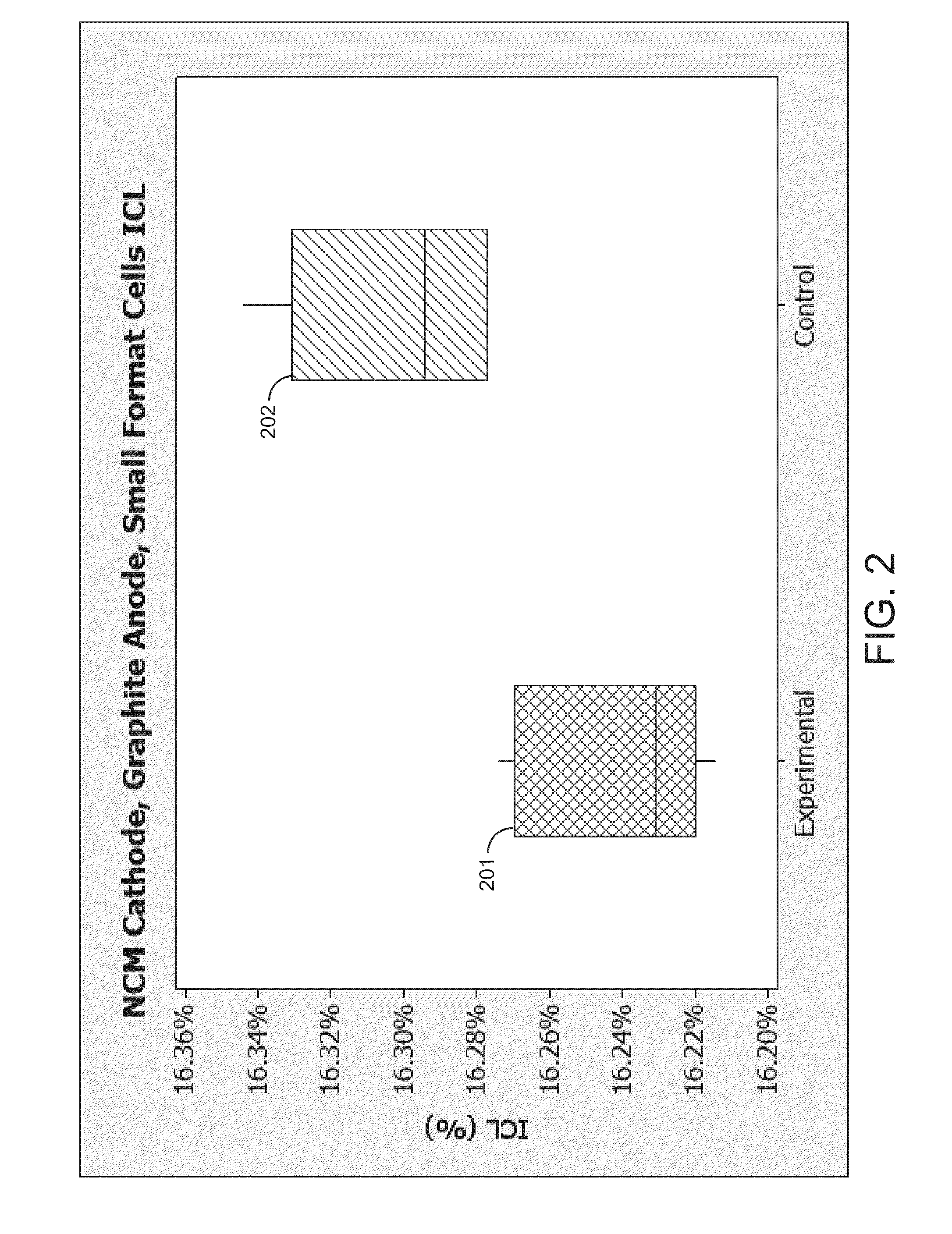Electrolyte formulation for reduced gassing wide temperature range cycling
a technology of wide temperature range and electrolyte, which is applied in the direction of non-aqueous electrolyte cells, cell components, electrochemical generators, etc., can solve the problems of reducing the performance and/or life of batteries, limiting the use of batteries for applications in extreme temperature environments, and adding volume, weight, complexity and cost. , to achieve the effect of reducing the need for thermal management systems, reducing cycle life, and increasing power
- Summary
- Abstract
- Description
- Claims
- Application Information
AI Technical Summary
Benefits of technology
Problems solved by technology
Method used
Image
Examples
example 1
Electrolyte Formulation
[0089]An example electrolyte formulation according to the current disclosure comprises LiPF6 at 1.0 M, LiTFSI at 0.15M, EC at 40 vol. %, EMC at 45 vol. %, DEC, at 10 vol. %, PC at 5 vol. %, ES at 1.5 wt. %, VC at 1 wt. % and PS at 1.5 wt. %.
[0090]The electrolyte formulation is compared to control electrolyte formulations, as discussed below and in FIGS. 1 through 10. The electrolyte formulation shows improved properties during low temperature and high temperature tests over the control electrolyte formulations.
[0091]A first control electrolyte formulation comprises LiPF6 at 1.15M, EC at 30 vol. %, EMC at 55 vol. %, DEC at 10 vol. %, PC at 5 vol. %, ES at 1 wt. %, and VC at 2 wt. %. The first control electrolyte formulation includes a first additive containing a sulfonyl group, ES, but does not provide the salt solution or anti-gas additive of the current application.
[0092]A second control electrolyte formulation comprises LiPF6 at 1.15M, EC at 35 vol. %, EMC a...
PUM
| Property | Measurement | Unit |
|---|---|---|
| wt. % | aaaaa | aaaaa |
| weight % | aaaaa | aaaaa |
| wt. % | aaaaa | aaaaa |
Abstract
Description
Claims
Application Information
 Login to View More
Login to View More - R&D
- Intellectual Property
- Life Sciences
- Materials
- Tech Scout
- Unparalleled Data Quality
- Higher Quality Content
- 60% Fewer Hallucinations
Browse by: Latest US Patents, China's latest patents, Technical Efficacy Thesaurus, Application Domain, Technology Topic, Popular Technical Reports.
© 2025 PatSnap. All rights reserved.Legal|Privacy policy|Modern Slavery Act Transparency Statement|Sitemap|About US| Contact US: help@patsnap.com



